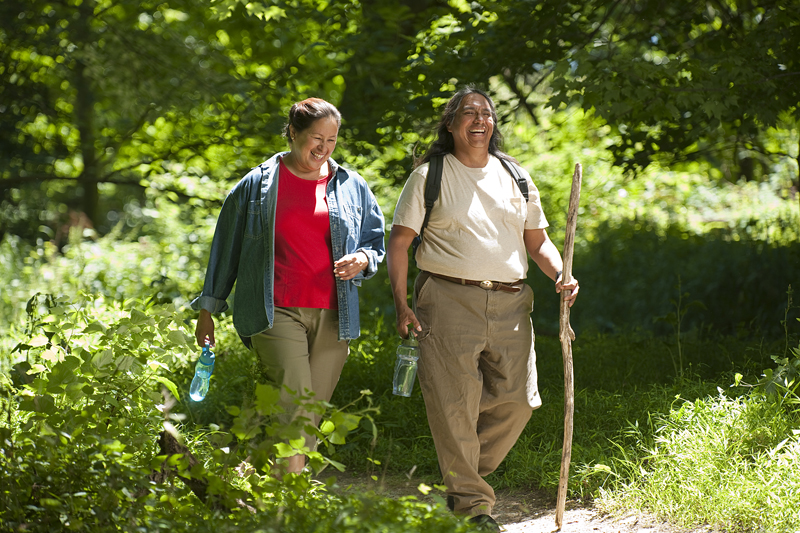By ICAA
What do we know about physical activity among older adults?
For starters, physical activity is a powerful means to help prevent age-related loss of function, reduce the risk of chronic disease, improve mental and physical health, and support quality of life.
Older adults who exercise can:
- Reduce their risk of heart disease, some cancers, hypertension, high cholesterol and obesity;
- Mediate hypertension, diabetes and depression;
- Lower their risk of falls and injury;
- And improve their sleep.
The American College of Sports Medicine (ACSM) recommends that older adults get 150 minutes of moderate-intensity cardiovascular exercise per week. Recommended activities include strength-training, neuromotor exercise, functional training to improve balance, and flexibility excerise.
In general, strength training is important not only for fall prevention, fat metabolism, and bone health, but for the ability to perform daily activities such as lifting groceries. Cardiovascular conditioning reduces the risk of heart disease, improves endurance, and elevates mood. Improvements in flexibility aid regular activities like reaching, and ease certain conditions like arthritis. Improvements in balance help prevent falls and improve performance in sports and games.
Walking is the primary recommended activity, since it is inexpensive and simple. Only 12% of adults age 65 to 74 years old do strength training, but this is also an equally encouraged activity.

Aging is such a personal process that levels of physical fitness and function can not be recommended by chronological age. Some people in their ’70s and ’80s run marathons, while others are confined to wheelchairs. The prescription for physical actiivty must account for individual levels of function as well as the biological process of aging.
While the value of physical activity for older adults is well-documented,the number of older adults who exercise remains small. There is an unhealthy trend toward obesity in the older population, which is a future health problem. Other reports show that physical activity is more prevalent among white Americans than among ethnic groups or people of color.
Survey after survey finds that older adults know about the benefits of exercise, yet few take action. How do we change this?
The National Physical Activity Plan (NPAP) is clearly a positive step forward, as it is filled with solid research and recommendations. However, like older adults themselves, we need to move from recognizing that physical activity is important to actually making change happen.
Making an Impact
How do we make an impact? How do we get organizations and individuals to embrace exercise? How do we fulfill the visions of the National Physical Activity Plan?
Maybe the answer lies within an August 27, 2012 New York Times article by Jane Brody. In the article, entitled, “Changing our Tunes on Exercise,” Brody interviews Michelle L. Segar, a research investigator at the Institute for Research on Women and Gender at the University of Michigan. Brody writes that “based on studies of what motivates people to adopt and sustain physical activity, Dr. Segar is urging that experts stop framing moderate exercise as a medical prescription that requires 150 minutes of aerobic effort each week. Instead, public health officials must begin to address ‘the emotional hooks that make it essential for people to fit it into their hectic lives.'”
“Immediate rewards are more motivating than distant ones,” says Segar. “Feeling happy and less stressed is more motivating than not getting heart disease or cancer, maybe, someday in the future.”
How can we benefit from this information? According to Brody, “stop thinking about future health, weight loss, and body image as motivators for exercise. Instead, experts recommend a strategy marketers use to sell products: portray physical activity as a way to enhance current well-being and happiness.”
What do you think? Is this a promising strategy? And how will you use it to increase the physical activity level of your older consumer?